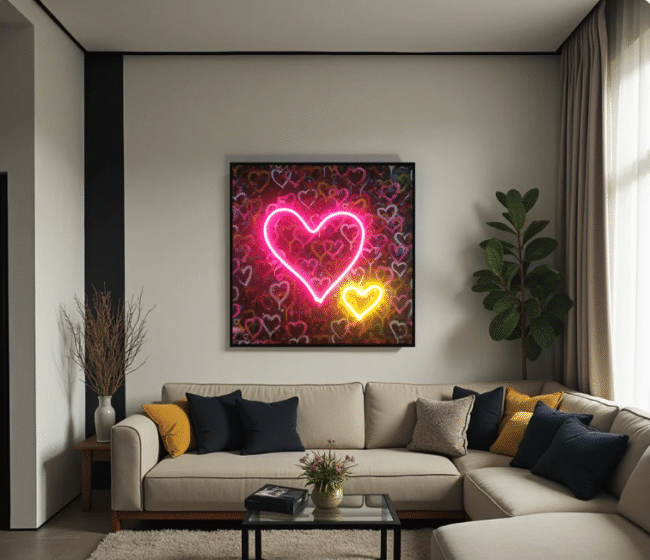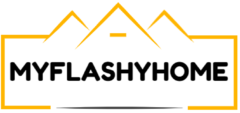
In the realm of interior design, the quest for unique and captivating elements never ceases. Wall art, a timeless decorative staple, has undergone a luminous transformation, merging artistry with technology. Enter: wall art with LED lights, a trend that’s not just about adorning walls, but about orchestrating a symphony of light and shadow. This innovative approach injects dynamism and personality into any space, making it a focal point that sparks conversation and evokes wonder.
The Dawn of Illuminated Art
This article is about wall art with LED lights. Gone are the days of static wall decorations. LED lights have revolutionized the way we perceive art, offering a dynamic and customizable experience. Their energy efficiency, longevity, and versatility make them the perfect partners for artistic expression.
Highlighting Details
LED lights can be strategically placed to emphasize specific elements of a piece, drawing attention to intricate details and textures that might otherwise go unnoticed.
Creating Mood and Atmosphere
The ability to change colors and brightness allows for the creation of diverse moods, from a calming ambient glow to a vibrant, energetic display.
Adding Depth and Dimension
By casting shadows and illuminating different layers, LED lights can transform a flat image into a three-dimensional spectacle.
Energy Efficiency and Longevity
LEDs consume significantly less power than traditional lighting, and their long lifespan ensures that your illuminated art remains a captivating feature for years to come.
Types of LED Wall Art
The world of LED wall art is vast and varied, catering to diverse tastes and preferences. Here are a few popular styles:
Canvas Prints with Integrated LEDs
These prints incorporate LEDs behind the canvas, creating a soft, diffused glow that highlights the artwork. They are perfect for adding a subtle touch of illumination to any room.
Lightboxes
These are enclosures that house illuminated prints or transparencies. They provide a bright, even light source and are ideal for showcasing vibrant colors and intricate designs.
Neon Art
A retro-inspired trend that’s making a comeback, neon art uses bent glass tubes filled with neon gas to create vibrant, eye-catching displays. LED neon, a modern alternative, provides the same aesthetic with greater energy efficiency and durability.
Sculptural LED Art
This category encompasses three-dimensional artworks that incorporate LED lights into their design. These pieces often serve as focal points, adding a dramatic and contemporary touch to any space.
Pixel Art LED Panels
These panels display digital art through individually addressable LEDs, allowing for dynamic animations, color changes, and customizable patterns.
DIY LED Wall Art
For those with a penchant for hands-on projects, DIY LED wall art offers a rewarding and personalized experience. Here are a few ideas to get you started:
String Lights and Photo Collages
Create a whimsical display by weaving string lights through a photo collage, adding a warm and inviting glow to your memories.
LED Backlit Shadow Boxes
Construct a shadow box and incorporate LED strips to illuminate a collection of miniature objects or paper cutouts, creating a captivating three-dimensional display.
Custom LED Signs
Use LED strips and acrylic sheets to create personalized signs with your favorite quotes, song lyrics, or inspirational messages.
LED Canvas Art
Purchase a blank canvas and use LED strips to backlight a painted design, creating a unique and luminous artwork.
Integrating LED Wall Art into Your Interior Design
To ensure that your LED wall art complements your overall decor, consider the following tips:
Choose the Right Placement
Select a location that maximizes the impact of the illumination, considering the ambient light in the room.
Coordinate Colors and Styles
Ensure that the colors and style of the LED wall art harmonize with the existing decor.
Control the Brightness and Color
Utilize dimmers and color-changing LEDs to adjust the ambiance according to your mood and the occasion.
Consider the Scale
Choose a size that is proportionate to the wall and the surrounding furniture.
Use as a Focal Point
Let your LED wall art be the star of the room, drawing attention and sparking conversation.
The Psychological Impact of Illuminated Art
Beyond its aesthetic appeal, LED wall art possesses a remarkable ability to influence our emotions and create specific atmospheres. The interplay of light and color can significantly impact our mood, making it a powerful tool for interior design.
Color Psychology
Different colors evoke distinct emotional responses. Warm tones like red and orange can create a sense of energy and passion, while cool tones like blue and green promote calmness and relaxation. LED lights offer the flexibility to switch colors, allowing you to tailor the ambiance to your desired mood.
Brightness and Intensity
The intensity of light can also affect our emotions. Soft, diffused light can create a cozy and intimate atmosphere, while bright, vibrant light can energize and invigorate. Dimmers allow for precise control over brightness, enabling you to fine-tune the ambiance to your liking.
Creating a Focal Point for Relaxation
Illuminated art can serve as a calming focal point in a room, drawing the eye and promoting a sense of tranquility. A gently glowing canvas or a subtly lit sculpture can create a serene and inviting atmosphere.
Enhancing Social Spaces
In social spaces like living rooms or entertainment areas, LED wall art can create a vibrant and engaging atmosphere. Dynamic color changes and animated displays can add a touch of excitement and spark conversation.
Conclusion
Wall art with LED lights is more than just a passing trend; it’s a testament to the evolving nature of art and design. By seamlessly blending creativity with technology, it offers a dynamic and captivating way to personalize our living spaces. Whether you opt for a pre-made piece or embark on a DIY project, LED wall art promises to transform your walls into a mesmerizing canvas of light and shadow, illuminating your world in a whole new way. This trend will continue to evolve as LED technology gets better, and the art that can be displayed becomes more and more dynamic.
